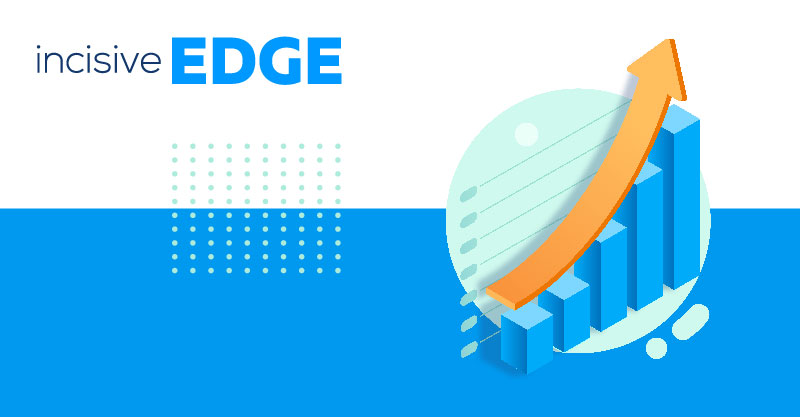A buyer's commitment to purchase a commodity or subscribe to a particular service isn't a one-off event. It's more of a linear process of information gathering, assessment, and decision-making which forms a sometimes logical path known as a customer buying journey.
There are distinct stages along that path at which interventions from outside sources can sway or shepherd a customer toward a particular course of action or pattern of behaviour.
As marketers, it's our responsibility to be able to both chart the direction and progress of our target customers along the path, and to identify and implement those interventions most likely to facilitate their journey, and those most liable to induce the kind of behaviours resulting in the buyer's decision to invest in the products or services that we're offering.
Buyer Personas and Behaviour Models
Speaking of behaviours, the importance of creating buyer personas for each of our target demographics cannot be under-estimated. They should form the bedrock of everything you do and are far more than just a marketing exercise.
Using market intelligence, customer interviews and other real-world data sources to construct a well-rounded personality for the buyer makes it that much easier to anticipate how customers interact to certain stimuli, and the goals and pain points that will at times galvanise or frustrate them on their journey.
Behaviour modelling is a crucial part of the mix, and buying practices may be categorised into four main journey types as follows:
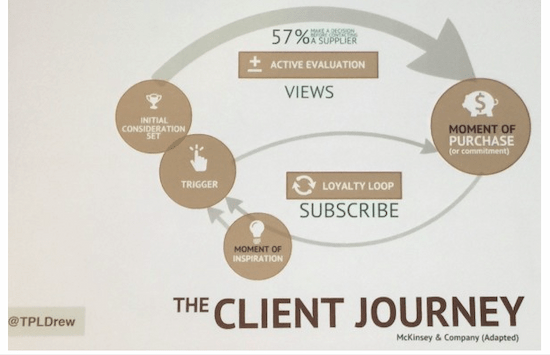
(Image source: contentmarketinginstitute.com)
- Easily Convinced: This would include impulse buys made in response to an emotional trigger. If the purchase gives the buyer a positive experience, then repeat purchases from the same brand or subscription to a service may result. In more complex cases, the impulse brand may be added to a buyer's preferred list of providers – those given first consideration when making any subsequent purchase.
In the creation of content for inbound marketing purposes, the goal for this type of buyer is to create inspirational moments and emotional triggers which associate a particular brand with those positive feelings that spurred that initial purchase.
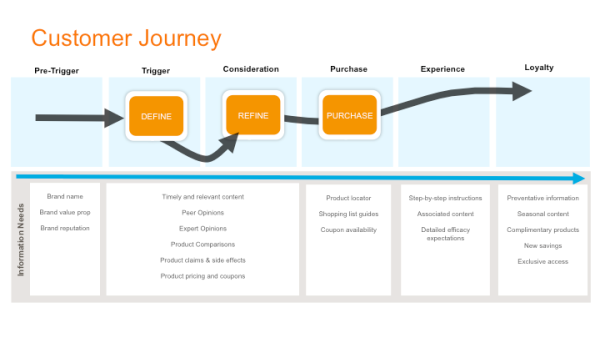
(Image source: contentmarketinginstitute.com)
- Before And After: A rigorous model for carefully considered, often high-stakes or life-changing purchases – like a house, car, or investment plan. There are layers to reflect the information-gathering streams (brand names and products, pricing, location of buying outlets, other relevant content), and to take in the journey beyond a purchase (including customer experience and brand loyalty).
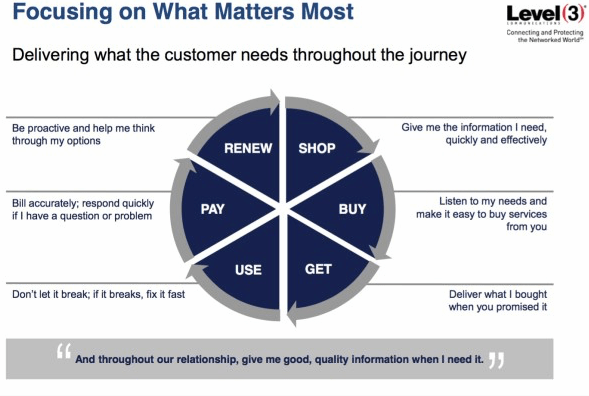
(Image source: contentmarketinginstitute.com)
- Circular Model: For purchases made at an organisational level, involving customers from various departments who may not share a common set of priorities, pain points, or objectives. To address these conditions, differing content, geared towards these varying needs must be created.
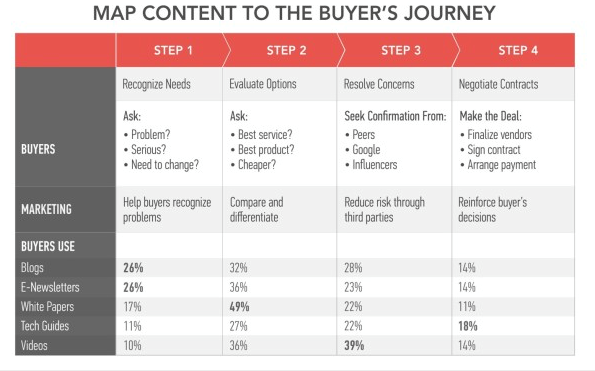
(Image source: contentmarketinginstitute.com – model created by George Stenitzer)
- Consistency Model: Used in co-ordinating campaigns that may span several months or years, involve the members of a large buyer's committee, and concern the acquisition of major assets such as infrastructure, essential services, equipment, or real estate. As the name suggests, consistency across the board (in messaging and promotion) is key to keeping all the stakeholders satisfied that they're being dealt with transparently, and with integrity.
The Journey in Principle
There's a general consensus that the typical buyer's journey consists of three essential phases:
- An Awareness that there's a problem that needs solving, a gap that needs filling, or an issue that needs to be addressed through the acquisition of a new commodity or service.
- A Consideration of the various options available for fulfilling this need or resolving their problem. This usually involves market research, window shopping (virtually, and on the street), sounding out opinions from various sources, and gathering information using a range of different methods.
- A Decision to make a specific purchase or to buy a particular service, based on the parameters of their problem/need, and the knowledge gained from their research.
With inbound marketing, content creation, and the maintenance of an online presence now all crucial parts of the selling process, there's scope for marketers to intervene constructively at all stages of this journey.
Recognising the Problem or Need
At this stage, a customer may have only a vague awareness that something's missing or needs fixing. They may not even be able to put their requirements into words – which is where we can step in as facilitators.
Studying market intelligence and conducting a "customer needs analysis" based on our buyer personas may yield the information necessary to put the objectives or pain points of the prospective customer into words. And these words can form the basis of blog posts, "How tos”, or check-lists, which focus on problems and solutions relevant to the targeted buyer.
How do you Optimise the Buyer Journey
The majority of potential buyers (some 70%, according to Google and Forrester) now do research into products or services prior to making a purchase. Generic terms and brand names are used in the search – and may not include those keywords that one would logically assume to be relevant.
Search optimisation strategies for marketing efforts at this phase need to address the full range of possible terms, and not just the most commercial ones. Typical search funnels within a business should be studied with an eye to exposing potentially valuable keywords which may have been otherwise overlooked.
Within the search funnel, it's our responsibility to present ourselves high on the list of returned results – and a great way to do this is by continuing the problem/solution-based content strategy of the earlier phase of the journey. Solutions should address the core or underlying needs of the buyer persona, rather than focusing on individual products or services at this stage.
Evaluating Alternatives
Armed with the knowledge of their problems or needs and a range of options on how to resolve them, the customer now faces the task of sifting through brand names, pricing options, and feature sets. This is a major phase of the buyer's journey stages, and the one in which it's imperative to present the customer with the full range of benefits and features of a product or service.
Integration with their existing set-up, guarantees and service-level conditions, returns policies, technical support, shipping costs, delivery, logistics: all of these should be made available via your web site, eCommerce portal, social media, or other online platforms.
Provisions should also be made for offline methods of delivery like phone lines, in-store visits, and other "real-world" contact points in an omni-channel approach to information delivery.
Deciding On a Product or Service Provider
Fast, efficient, friendly service, a pain-free checkout procedure, the ability to complete transactions via multiple channels, and an assurance of transparency are among the differentiators that can sway a customer’s buying process in favour of one organisation over another.
Coupled with competitive pricing and a killer feature set, these are also the design parameters for the customer experience at the conversion stage.
After the Purchase – And into the Future
Once money and commodities have changed hands, the essential task of retaining the new buyer may be addressed via an emphasis on customer service. That means courteous and available technical support (aiming for the 24/7/365 ideal), great service provision, and the maintenance of brand loyalty.
Beyond incentive schemes, special offers, and discounts, this phase may be augmented through content provision that follows up on purchases and subscriptions (e.g., emails and newsletters), and continues a dialogue on new and existing features of a product or service.
